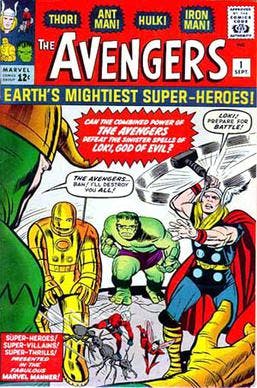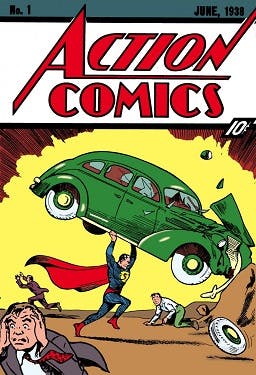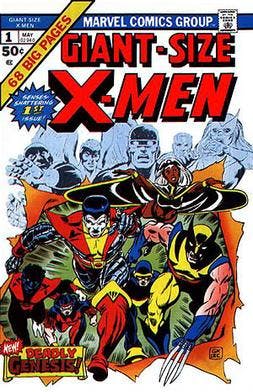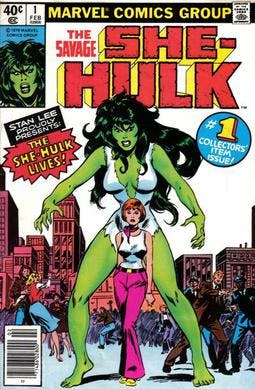Buyers Guide to Comic Books
by Tom Orr
For many, comic books are like a nostalgia speedway back to careless childhood. Our favourite and timeless heroes such as Spider-Man, Batman, X-men but also Asterix and Obelix, Tintin, and many others can still make clearing out the attic take longer time than it should. Today the comics are not only considered an entertainment but also a respected art form that inspired many bestselling and loved Hollywood productions and TV series. But did you ever wonder how much your old comic books may be worth? Read our Expert article and find out!
Comic book covers, Spider-Man and Batman. Image: Public Domain
My journey with comic books started on a summer afternoon in 1967, when I plunked down 12 cents each, for Tales of Suspense #94 and Avengers #44 at a little Mom and Pop store in West Hazleton, Pennsylvania. Before, I was an avid reader of the comics section of the newspaper. My first comic books were Archie Comics (oh, Betty & Veronica!). But after a short while, they became childish. When I saw the first episode of the Batman TV show, I knew this genre was for me. I wanted to see the character treated more seriously, though. DC Comics would feature Batman prevalently on their covers because of the show, so I purchased an 80 page Giant Justice League of America, and I knew I was onto something, but there was still something missing. There was something old-fashioned about their heroes. They were like your parents' heroes: all white, mostly male, upright, and flawless.

The debut of the original Avengers:The Avengers#1 (Sept. 1963). Cover art by Jack Kirby and Dick Ayers. The five founding members were: Iron Man, Thor, Ant-Man, The Wasp, and The Hulk. Image: Wikipedia / License: Fair use
Tales of Suspense #94 and Avengers #44, were about characters that I had never heard of from Marvel Comics, because the art on the covers by Jack Kirby and John Buscema, just jumped out at me. They seemed more dynamic than the DC Comics, and when I read them I was hooked. The stories had a humor and maturity that I was looking for. Marvel heroes had real-life problems. It was this moment that lead to a lifelong avocation and profession that had me on the phone with collectors like Billy Crystal, Penny Marshall, Eddie Vedder, James Earl Jones, and more.
Related: When Superheroes Took Over The Comic Books
Why do people collect comic books?
There are three reasons why people collect comic books. Probably the main one is because it connects them to their childhood. They want to collect books that they remember. When people start to collect comics, they often focus on those first ones they ever read, and these can get quite expensive, especially if they were the comics from the Golden Age, so years between 1939-1956.
Another reason is that comic books are the form of art right now. They developed to the point where they are now best selling movie companies. Marvel is taking a storyboard from a comic book, panel by panel, and making a movie out of it. A lot of the comic book artists are now working on the movies as well designing the next stories. Also many of the writers who were writing comics in the 90’s and 2000’s are now producing in Hollywood.
The third reason is that people like particular characters, and want to collect all their adventures.

Comic book covers. Image: Public Domain
Where did collecting comic books become popular as a serious hobby?
During 80’s and 90’s people started seeing the value in the comic books and started collecting them. The comics did not have the value they hold now, but back then people got more serious about it, especially if someone had issues from 60’s and 70’s.
Comics divide into eras, the Golden Age, The Silver age and and the Bronze Age, and then the Modern Age. The Golden Age and the Silver Age comics are the ones that can be worth millions and hundred thousands of dollars. They started in the 1940’s as as a popular culture that everybody read. There were comics on every topic: love, western comics, superhero comics and they weren't dashed by quality but they were reading quickly. During and after the war, there were also comics on fights and war stories, the stories began to mature and the readership was changing. Marvel comics started in the 1960’s, that’s the Silver Age and it was a revolution. I believe it was 1970 when the first comic book price guide came out and if there is a price guide for something that means that there is an interest in collecting. Back then people knew that they would have to pay pay $100 to get an Action #1 from 1939 if they knew the right guy to send in the mail. So there was a considerable appreciation for comics, when you bought them at a right time. When the information came out to the general public, that you can make money out of back issues, people started to saving them in perfect condition.
“What’s going to be worth money is what you enjoy the most because if you know your comics and you know the characters and you know the artists and the writers, maybe you'll be able to pick out a winner that's going to be worth money. That is not a stock market, I can't just tell you: buy this. Read them, love them, enjoy them”.

Cover ofAction Comics1 (Jun 1938 DC Comics), art by Joe Shuster, art, andJack Adler, color. Image: Wikipedia / License: Fair use.
How to start collecting comic books?
When I was running the comic book and store in the 80s, it was the hay day for the comic book stores, that was the end of the Bronze Age of comics.The people often asked me: “What should I buy?”, “What should I get?”, “what's going to be worth money?”. And then I would tell them every time: “What’s going to be worth money is what you enjoy the most because if you know your comics and you know the characters and you know the artists and the writers, maybe you'll be able to pick out a winner that's going to be worth money. That is not a stock market, I can't just tell you: buy this. Read them, love them, enjoy them”.That is what I would tell them.

Cover of Marvel Super-Heroesvol. 1, 18 (Jun, 1990) Art byJim Valentino. Image: Wikipedia / License: Fair use
By the end of the 1990’s there were so many people coming into the comic stories every week and they all knew that they ought to get rich, so the were buying like X-Men number 1 or Spider-Man number 1, with new artists, with the new stories that were tremendous, and it was a very big hype. They were selling 800 000 copies copies which is phenomenal, because the best comics of the 80s were selling maybe around 500,000 copies for a single issue, for popular issues. But those comics that were going to be worth a lot of money like the X-Men number 1, they turned out to be worthless because everybody saved them in perfect shape. The ones that are worth money now from that period were actually surprises, like Walking Dead number 1, nobody knew that that was going to be so popular.
For the more recent comics it is harder to pick a winner, but when you go back to the to the 1960s and the Golden Age then the comics were introducing the origins of Spider-Man, The Hulk, Captain America, The Fantastic Four, Superman, Batman- all the popular characters! Superman is going to be 100 years old soon! There is really so much you can choose from , so many things you can do with comic books nowadays, and that is fantastic but also daunting for someone who wants to start at it today

Giant-Size X-Men #1 (May 1975). Cover art by Gil Kane and Dave Cockrum. Image: Wikipedia / LIcense: Fair use
Where to look for collectible comic books?
Comic book stores nowadays do not sell comics, they sell merchandise connected to them, so figurines or statues. These can be really valuable too, especially if they come from limited editions. For collectible comic books, you can look at comic conventions like the one in San Diego, which is the biggest comic-con in the world, or the one in New York in autumn. You can also look for them at Ebay. In the 1990’s The Internet and Ebay came around, and you could now sell your comics not only to comic book stores but directly to someone who was interested in it, someone across the country. Ebay has a big collectors community and the books are sold from collector to collector. It is hard to beat that. There are also specialised auctions for all really expensive books, like the one from the 1940’s. So if you are looking for Action Comics #1 do not look for it on Ebay, look for it at the auctions at Heritage, Christies or other big auction houses that organise those specialised sales.
What comics are most popular to collect?
Like I said before, the most popular characters are the most popular to collect. So the new Spider-Man, the new Superman, all the ones you can name. One of the tricks today is that the comic that was not very popular gets a Hollywood movie, a Hollywood treatment and suddenly it is very popular. Exactly what Marvel did with the Guardians of the Galaxy, for instance, which was a pretty low selling comic, nobody cared about. You may want to invest in She Hulk, which is about to come out as a TV series. She is funny, so I think people will like her. In general female superheroes are very popular right now. Ms Marvel also got her TV series now.
Related: Fightin’ Femmes: Unmasking Comic Book Superheroines

Cover to Savage She-Hulk #1, February 1980. Art by John Buscema. Image: Wikipedia / License: Fair use.
What comics are the most valuable to collect?
The first issues of the comics that introduce the character, 1st issues of Spider-Man and Batman in pristine conditions can be worth millions of dollars. Here is the list of 15 most expensive comics that sold at the auction:
Action Comics #1 – CGC 9.0 – $3.2 Million
Action Comics #1 – CGC 8.5 – $1.5 Million
Amazing Fantasy #15 – $1.1 Million
Detective Comics #27 – $1,075 Million
All Star Comics #8 – $936,223
Batman #1 – $567,625.00
X-Men #1 – $492,937.50
Flash Comics #1 – $450,000
Tales of Suspense #39 – $375,000
Marvel Comics #1 – $350,000
Captain America Comics #1 – $343,057
Incredible Hulk #1 – $326,000
Fantastic Four #1 – $300,000
Whizz Comics #2 – $281,000
Avengers #1 – $274,000

At the 2014 New York Comic Con, Vincent Zurzolo of Metropolis Collectibles displays the CGC 9.0 copy of Action Comics #1 for which his firm paid $3.2 million (USD). Image: Gary Dunaier / License: CC BY-SA 4.0
What comic books are the rarest?
Of course the rarest ones are the first issues of comic books, where the superheroes made their first appearance. From the 60’s and 70’s comic books like the introduction of She Hulk for example. Of course what is important is a grade, and all the comic books are very grade sensitive. There can be thousands of dollars of difference between the same issue, depending on its condition. So the highest graded comic books have white pages, no trims, sharp corners and no creases.
What is the most famous comic book collection in the world?
There were many big collections of comic books sold over the years, some of the owned by vey famous people. But, the one that really stands out is collection of comics owned by Bob Bretall. He really has every comic, going back to the Golden Age. He has over 100 000 issues. It is a private collection, so you cannot just go and see it.
What are the most famous comic books artists and writers
There are different classic artists from each era. There is Jack Kirby and Steve Ditko who created all the Marvel characters. There is Frank Miller and George Pérez from the 80’s and 90’s, who made the comics more adult and more realistic and gritty. There is so many artists and just so much creative talent in comics. In the 1960’s artist like Jack Kirby got $100 per drawn page, the average comic book artist got much lower than that.
Today the artists use digital software to make sketches although the initial ideas are often made in a classic way, with a pencil.
"Should you revive the old comics? No, don’t try to revive it, because once you do, the grade will be significantly lower. However, if you are a purist collector, and this book is for you, and you want a nice book that you want to look at, maybe it is by a famous artist you like, have it bleached and restored and you can enjoy it more. "

Photo of Jack Kirby taken by Susan Skaar during a session in the studio at Jack's home in Thousand Oaks, CA. The photos were later published inThe Art of Jack Kirby(Blue Rose Press, 1993). Image: Susan Skaar / License: CC BY-SA 3.0
What to look for when collecting for comic books?
While looking to buy a comic book, check if it's trimmed. In the 1970’s the newspaper dealers would trim all the rugged edges from the comics and the trimmed ones will get a lower grade. The people who grade them actually measure each comic to see if it fits the standard size. Paper should be as white as possible. Old comics, before 1970 were made on the news press paper, and they were meant to degrade, the quality of paper was very low, it got yellow very fast. The cover was made of thicker and glossy paper. Today’s comics are printed on paper and are meant to last longer.
Should you revive the old comics? No, don’t try to revive it, because once you do, the grade will be significantly lower. However, if you are a purist collector, and this book is for you, and you want a nice book that you want to look at, maybe it is by a famous artist you like, have it bleached and restored and you can enjoy it more. The comics from the 1960's and 1970’s deteriorated faster, like newsprint. So that is why people will pay much more for the comic with white pages from that time.
How to care for your comic book collection? Is there a way to revive a damaged issue?
Store your comic books in a special polyurethane containers with acid free paper board, away from the sunlight and airtight. This is for the collectors that wish to sell or buy. People that collect comics for themselves often just store them on a shelf neatly stacked within reach so they can read them whenever they want.
Tom Orr is is a recognised expert in comic books, sports memorabilia, and popular culture. He was a consulting expert for Auctionata of Berlin, Germany, and has managed collectibles for several different stores and national auction houses. He studied history at the University of Pennsylvania, and theatre at Temple University. Read the full story on Tom’s comic book interest here!

